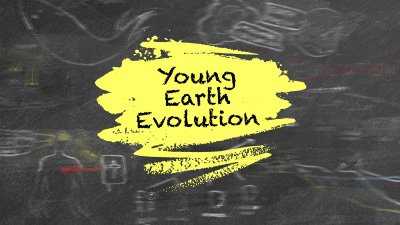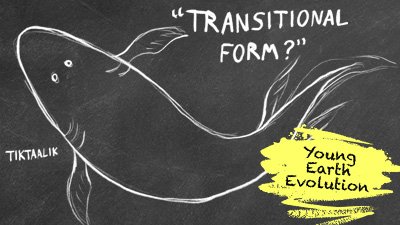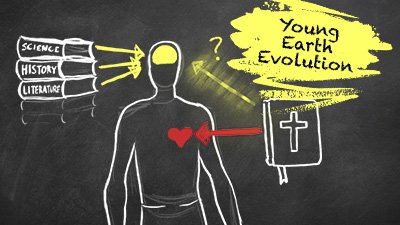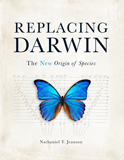
Do Humans and Chimps Share a Common Ancestor?
[Editor’s Note: One of the commonly used “stumper” arguments for evolution is the supposed similarity of human and chimp DNA. If evolution were true, this would make sense, as chimps are one of our nearest “relatives.” A biblical view, however, would deny this relationship, as Genesis 1–2 makes it clear that animals reproduce after their kind and—most importantly—that humans are very distinct from animals, having been created in God’s very image. How then do we respond to arguments that humans and chimps have DNA that is 99% the same? Simply put, hogwash. Yet, sadly, there are some within the young-earth creationist circles that would be quite comfortable with percentages this high, accepting the confusing claims of evolutionists and misleading those who “trust the science” without looking critically at the claims.
For example, Dr. Todd Wood, in publications ranging from 20061 to 2016,2 has continued to hold such a position of high DNA similarity, despite the fact that we at Answers in Genesis have been questioning and downgrading such high percentages since at least 2003.3
Dr. Georgia Purdom, who holds a PhD in molecular genetics from The Ohio State University, wrote the following piece for Answers magazine in 2018. In it, she again dispels the commonly held claim and explains why we as believers need not only to reject such blatantly misleading figures but also to speak out against their use—even by other perhaps well-meaning Christians. Parroting high figures such as even anywhere in the 90th percentiles only plays into the hands of those wishing to explain life—particularly human life, which is immensely special in a Christian worldview—as a senseless, but arguably lucky, occurrence in a universe of death and chaos.]
We often see the statistic that human and chimp DNA is 98–99% similar. But is that true?
We’re probably all familiar with the iconic image of man’s supposed evolution from an apelike creature. On the far left is a small chimp that, over the course of millions of years, gets larger, walks upright, loses hair; and on the far right we have man as the final product. On the surface it looks rather simple and straightforward and, to many, believable. But does it reflect reality, or is it just another evolution story?
Biblical History
According to God’s Word, man and chimps were separate creations by God. In Genesis 1:24–25 we read of God creating the land animals by his spoken word “according to their kind” (which would include the kind that chimps belong to). In Genesis 1:26–27 we read of the creation of the first man and woman, Adam and Eve, not only as separate creations from the animals but also as unique creatures because they alone were made in the image of God. So clearly, from a biblical perspective, man didn’t evolve from any creature. This is very different from the evolution story, and both cannot be correct.
Does Genetics Confirm Biblical or Evolutionary History?
From TV shows to zoo signs, textbooks, and more, we often hear or read that human and chimp DNA is 98–99% the same, proving our shared ancestry. But is that true?
Surprisingly, even the evolutionists would agree it’s false. In a telling article titled, “Relative Differences: The Myth of 1%,” the author (an evolutionist) wrote, “Genomewise [referring to the DNA inside the nucleus of the cell], humans and chimpanzees are quite similar, but studies are showing that they are not as similar as many tend to believe.”4 So just how similar is human and chimp DNA?
At the Sequence Level
The 98–99% figure comes from comparing only DNA between humans and chimps that “aligns.” This refers to any genetic sequence that is similar enough (although not a 100% match) that a computer program can align them. And within this aligned region there is only one type of difference that evolutionists typically count. These differences are called substitutions. For example, human DNA might have a T but chimp DNA in the same location has a G. Evolutionary ideas propose that the common ancestor of humans and chimps likely had a G in that position but a mutation changed the G to T in the line that eventually led to humans. These types of differences account for the often-touted 1–2% difference between human and chimp DNA.5
What about the other differences within the aligned DNA, such as gaps where whole sections of human DNA have no match to the sequence in chimp DNA (and vice versa)?
There are other differences as well that total approximately 16%.6 That’s 480 million base differences!7
What about the DNA that does not align? Millions of DNA bases outside the aligned regions in human DNA have no match in chimp DNA and vice versa. Approximately 4% of human DNA has no alignment to chimp DNA.8 That’s a glaring 20% total difference between human and chimp DNA!
If there are so many other differences besides substitutions, why do scientists typically focus only on the 1–2% difference? Time. Proposed evolutionary processes require slow, random processes. To account for all the other differences in the DNA, there would need to be more time since humans and chimps supposedly shared a common ancestor. The current ape-to-human timeframe of six million years is simply not enough time.
In addition, even if there was more time and those mutations could occur, they don’t do what evolution needs them to do. Mutations don’t cause the gain of novel traits—the gain of genetic information—necessary to change from one kind of organism into another.
At the Expression Level
DNA is more than just a sequence of bases. It’s a library that encodes the information on how to produce all the proteins necessary for each living organism. Genes are distinct sequences of DNA that encode the information for making the proteins, but a lot of other regulatory information is encoded in the DNA, determining when, where, how much, and under what conditions those proteins are produced. Chemical tags modify DNA and influence how the genes express the proteins. These tags are referred to as epigenetic markers because they exist outside of (epi-) the actual sequence of DNA (-genetics).
Let me use an analogy to explain. The following sentence can have two very different meanings, depending on the punctuation: “A woman, without her man, is nothing,” and “A woman: without her, man is nothing.” Perhaps it’s a silly illustration, but it gets the point across.
The words of both sentences are the same, but the meaning is different because of the punctuation. The same is true for DNA and its chemical tags. The sequence of DNA can be identical but produce different results based on the presence or absence of epigenetic markers. So if humans and chimps share a common ancestor and these chemical tags are heritable, they should have similar epigenetic markers, right?
They should (if evolution were true), but they don’t. One study compared human and chimp epigenetic markers in a type of white blood cell called neutrophils.9 Neutrophils were chosen because this cell type is so similar in humans and chimps. The scientists discovered differences in thousands of places. Some epigenetic markers were in humans but not in chimps and vice versa.
Another study showed major differences between human and chimp epigenetic markers in brain cells.10 Over 1,000 genes had major differences, and many times those differences led to increased expression of those genes in humans. The research also showed that abnormal patterns of epigenetic markers in humans typically lead to disease. So how could these markers change and evolve over time if so little change is tolerated well?
Only One Option
The biblical account of creation and the evolution story are mutually exclusive when it comes to the origin of man. Genetic evidence confirms that man and chimps do not share a common ancestor and is consistent with the biblical account of creation.
Beyond science overturning the evolutionary story of mankind’s origin, there is a much more significant reason why we need to know the correct version of our origins. Paul shares in Romans 5:15 and 1 Corinthians 15:21–22 that “one man,” Adam, brought death into this world. The punishment for Adam’s sin was suffering and death for all mankind (Romans 5:12) and all of creation (Romans 8:22). That is the bad news from Genesis 3, and it explains why all humans have a sin problem.
But Paul also shares the good news that the solution to sin and our salvation is found in the “one man Jesus Christ.” The sinless, perfect Son of God took the punishment for our sin by dying on the cross in our place. He then resurrected, showing his power over death and Satan (Genesis 3:15; 1 Corinthians 15:3–4). Our origins matter because the gospel is rooted in the history of the historical Adam, recorded in Genesis.
How Different Is Human and Chimp DNA?

Whenever you read that human and chimp DNA is 98–99% the same, it’s simply not true! The 98–99% refers only to substitutions in aligned regions where human and chimp DNA have different bases (or letters). But there are many other differences as well. There are gaps in the aligned region where there is human DNA but no matching chimp DNA or vice versa. There are also millions of bases outside the aligned regions that do not match at all, but these differences are not counted. If they are all counted, the similarity is only 80%, which equals 600 million differences between human and chimp DNA!
Footnotes
- “Evidence for the great similarity between chimpanzees and humans was recently reinforced with the publication of a rough draft of the chimpanzee genome. The sequence is in >361,000 pieces with a median length of 15,700 nucleotides. The sequence differs from the human genome by 35 million nucleotide mismatches (1.23%) and 10 million alignment gaps (~3-4%).” From Todd Charles Wood, “The Chimpanzee Genome and the Problem of Biological Similarity,” Occas. Papers of the BSG No. 7 (2006), p. 1.
- “The genes of the chimpanzee appear to be almost exact replicas of human genes.” Todd Wood and Joe Francis in “Genetics of Adam,” What happened in the Garden? Ed. Abner Chou, (Grand Rapids, MI: Kregel Publications, 2016), 49.
- David A. DeWitt, “Greater Than 98% Chimp/Human DNA Similarity? Not Any More,” Journal of Creation 17, no 1 (April 2003): 8–10.
- Jon Cohen, “Relative Differences: The Myth of 1%,” Science 316, no. 5833 (June 29, 2007), 1836.
- Jeffrey P. Tomkins, “Comprehensive Analysis of Chimpanzee and Human Chromosomes Reveals Average DNA Similarity of 70%,” Answers Research Journal 6 (2013), 63–69.
- Jeffrey P. Tomkins, “Comparison of 18,000 De Novo Assembled Chimpanzee Contigs to the Human Genome Yields Average BLASTN Alignment Identities of 84%,” Answers Research Journal 11 (2018), 205–209.
- Both chimps and humans have approximately three billion base pairs in their genome. 0.16 x 3 billion = 480 million.
- Tomkins, “Comparison of 18,000 De Novo Assembled Chimpanzee Contigs.”
- David I. K. Martin et al., “Phyloepigenomic Comparison of Great Apes Reveals a Correlation Between Somatic and Germline Methylation States,” Genome Research 21, no. 12 (September 2011), 2049–57.
- Jia Zeng et al., “Divergent Whole-Genome Methylation Maps of Human and Chimpanzee Brains Reveal Epigenetic Basis of Human Regulatory Evolution,” American Journal of Human Genetics 91, no. 3 (August 2012), 455–65.
Recommended Resources

Answers in Genesis is an apologetics ministry, dedicated to helping Christians defend their faith and proclaim the good news of Jesus Christ.
- Customer Service 800.778.3390
- © 2024 Answers in Genesis






